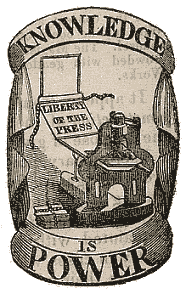



"With respect to future debt; would it not be wise and just for that nation to declare in the constitution they are forming that neither the legislature, nor the nation itself can validly contract more debt, than they may pay within their own age..." --Thomas Jefferson
WHEN PEOPLE TALK ABOUT THE THREE SEPARATE PARTS OF THE U.S. GOVERNMENT.they list the Executive, Legislative and the Judicial.
But I believe there are three other levels of power and influence that make things happen or conversely stop things and ideas from occurring. I will explain this theory,that you will not find in any civics or government studies books, but I believe they exist.
With more than 1.8 million civilian employees, the Federal Government, excluding the Postal Service is the Nation’s largest employer.
First you have the Executive branch and all the people who support and advise the president, This group even includes 44 Czars that are not confirmed by the Senate, are accountable to no one except the president!The President also makes around 2,000 executive appointments, including members of the Cabinet and ambassadors, which must be approved by the Senate!
Today, the executive branch consists of well over 3 million people who work in one of three general areas: the Executive Office of the President (EOP); the cabinet and 15 executive departments; and an extensive collection of federal agencies and corporations responsible for specific areas of the government, such as the Environmental Protection Agency and the U.S. Postal Service.
The second level of government is the Legislative and Judicial, and I deliberately lumped them together because since FDR packed the Supreme Court with Progressives, the Supreme Court has acted in the capacity of making Law! Roe vs Wade being a perfect example.
Each Member of the House of Representatives and the Senate have employees that comprise their administrative staff. These are the bureaucrats that are part of the 150,000 Federal Employees that comprise 30 agencies.
It is a fact that their are presently 74 Congressional Staff employees who are relatives of Congressmen/women and Senators.This is the third level of government I believe.
Each member of Congress has a office budget allotment which provides enough money to hire a sizable staff both in Washington, D.C. and back home in their states or districts. These staffers assist members in their efforts to be effective, well-liked representatives. In addition to money for staff, members of Congress also have travel allowances for trips between Washington and their constituencies as well as for trips inside their states or districts. One of the most widely recognized "perks" of House members and Senators is the ability to send postage-free informational letters or announcements to their constituents on a regular basis.
The Congressman and Senators are so busy attending Cocktail Party's given by foreign embassies and high roller Lobbyists, campaigning for re-election and attending Committee meetings. They hardly have time to take the hundreds of "junkets" that Congressional elected officials take each year to foreign and exotic places.
They hardly have time to read, much less write the Bills that are presented for votes in the Chambers of the House and Senate.
That is where the invisible part of our Federal government operates. The "staff" put together the thousand page Bills that are presented to their "bosses, the elected Congressman and Senators to vote up or down.
The power that these apparatchiks comes into play at this point. The staff know what they put into the proposed legislation and they make their recommendations to vote either for or against based upon their own biases and philosophies, not whether the proposed bill is good for the Republic and the economy. Many of the executive departments and independent agencies employ legislative counsels who are charged with the drafting of bills. These legislative proposals are forwarded to Congress with a request for their enactment.
The drafting of statutes is an art that requires great skill, knowledge, and experience. In some instances, a draft is the result of a study covering a period of a year or more by a commission or committee designated by the President or a member of the Cabinet. The Administrative Procedure Act and the Uniform Code of Military Justice are two examples of enactments resulting from such studies. In addition, congressional committees sometimes draft bills after studies and hearings covering periods of a year or more.Source:Library of Congress, Thomas
In the United States, the civil service was established in 1872. The Federal Civil Service is defined as "all appointive positions in the executive, judicial, and legislative branches of the Government of the United States, except positions in the uniformed services." (5 U.S.C. § 2101). In the early 19th century, government jobs were held at the pleasure of the president — a person could be fired at any time. The spoils system meant that jobs were used to support the political parties. This was changed in slow stages by the Pendleton Civil Service Reform Act of 1883 and subsequent laws. By 1909, almost 2/3 of the U.S. federal work force was appointed based on merit, that is, qualifications measured by tests. Certain senior civil service positions, including some heads of diplomatic missions and executive agencies are filled by political appointees. Under the Hatch Act of 1939, civil servants are not allowed to engage in political activities while performing their duties.
The U.S. civil service includes the Competitive service and the Excepted service. The majority of civil service appointments in the U.S. are made under the Competitive Service, but certain categories in the Diplomatic Service, the FBI, and other National Security positions are made under the Excepted Service. (U.S. Code Title V)
U.S. state and local government entities often have competitive civil service systems that are modeled on the national system, in varying degrees.
As of January 2007, the Federal Government, excluding the Postal Service, employed about 1.8 million civilian workers. The Federal Government is the Nation’s single largest employer. Although most federal agencies are based in the Washington D.C. region, only about 16% (or about 288,000) of the federal government workforce is employed in this region.
There are over 1,300 federal government agencies. Source: Wikapedia]








No comments:
Post a Comment